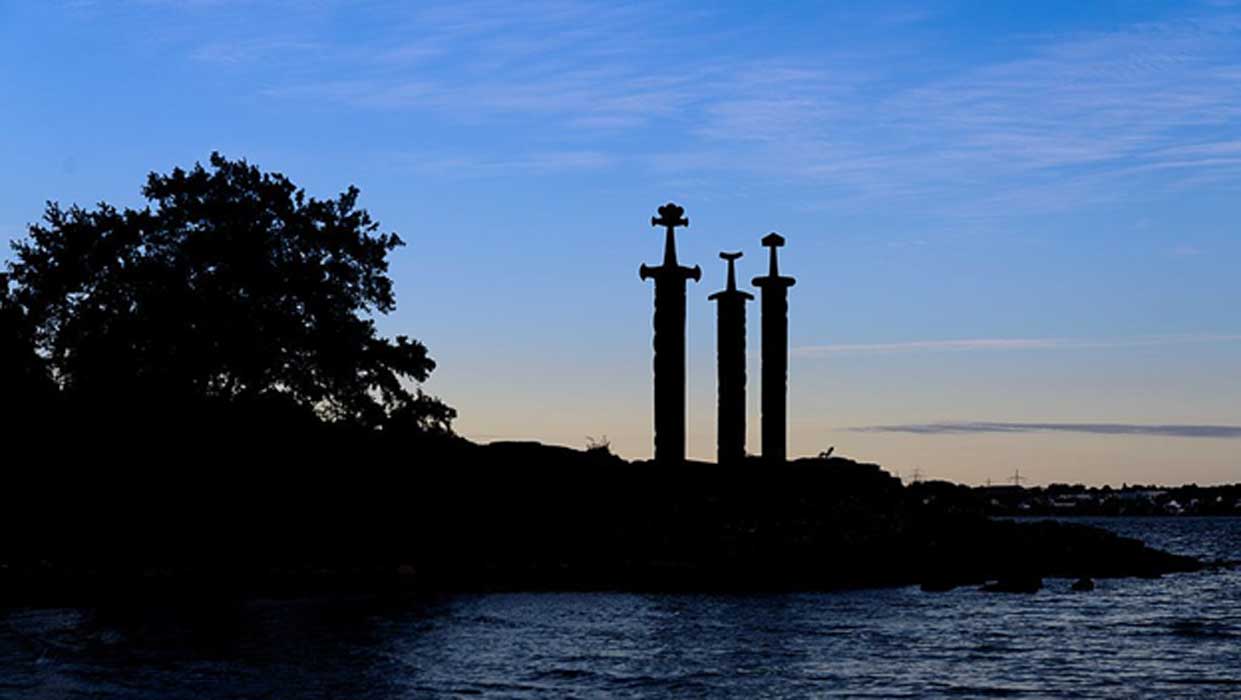Was a Sword Retrieved from a Lake in Norway Used for Executions?
A sword that has been pulled from a lake by two diving enthusiasts in Norway could have been used for executions, experts have claimed. The 500-year-old blade was dragged from one of Norway’s largest lakes.
The recently found sword was retrieved from Lake Mjøsa, located in the southern region of Norway, 35 miles (56 km) north of Oslo. This is not only Norway’s largest lake at 65 miles (100km long), but one of the deepest lakes in Europe with a depth of upto 400 meters (1312 feet). The ruins of a 12 th century cathedral lie on its eastern coast and it is popular for water tourism.

Norwegian divers fish sword out of lake. CC0 / Øyvind Holmstad / Redningsskøyta på Mjøsa
Hopeful Divers Finally Strike Iron
The Local has reported that the artifact was discovered by two Norwegian divers, Miro Baricic and Knut-Erik Gylder, who have spent much time exploring the floor of the lake looking for such treasures.
“We’ve mostly found rubbish up to now. Miro, who found the sword, realised quickly that it was a sword,” Gylder said to NRK.
Once the sword had been rescued from the lake - which being freshwater had aided its preservation - the finders took it to Mjøs Museum for proper examination. There Arne Julsrud Berg, the museum director, gave the sword a preliminary examination and assessed that there were indications that the sword was in the region of 500-years-old, placing it at the end of the Middle Ages in Europe.
- Ten Legendary Swords from the Ancient World
- Hunters Find Striking Viking Sword Isolated at High Altitude in Norway
- The Seven-Branched Sword: The Mystical Ceremonial Sword of Japan

The sword withdrawn from Lake Mjøsa. (Image: Arne Julsrud Berg / Mjøsmuseet)
The Days of the Sword
At this time, expansion of the Norse Lands through the Vikings ventures abroad had ceased. So too had the period which is widely considered Norway’s Golden Age. This time of peace and prosperity, with trade increasing with Britain and Germany, suffered a devastating blow not through bloodshed but due to the Black Death reaching the realm in 1349 and wiping out a third of the population. This weakened the strength of Norway for the upcoming two centuries, bringing us to what is believed to be the era of the sword.
Around 1500 AD, the weakened population of Norway was around 150000 and much of the land was owned by Church or State, with farmland being at only about 20% self-ownership. The land around Lake Mjøsa was rich and excellent for agriculture. Was this once impressive sword then the belonging of a wealthy land owner? Perhaps not as the spot in the lake where it was located led to speculation that it may have been onboard a boat. Many Norwegians made their living in shipping or fishing at the time.

Lake Mjøsa seen northwards from Minnesund, Eidsvoll. (Public Domain)
Could it even have been deposited there in 1508, when Christian II was quashing a peasant revolt and rowed across the lake to Toten, there capturing residents and imprisoning them in the vaulted cellar of the rectory in Østre Toten to await torture?
Such weapons were no longer being used just to plunder wealth and territory, or solve disputes concerning the strengths of Paganism verses Christianity. A chasm was being forged in the Christian camp with the tenets of Catholicism being criticised by Martin Luther. This Protestant Reformation began to be rolled out in Norway in 1529 against a Catholic resistance led by Olav Engelbrektsson. One can only speculate as to whether this sword may have been used to aid or resist the Reformation.
- The Wallace Sword: Was it Truly Wielded by the Famous Scottish ‘Braveheart’?
- When to Bathe and Bloodlet: The Oldest Text Printed in Norway is a Fortune-Telling Book
- 1,000-year-old Viking Boat Burial Discovered Under Market Square in Norway
The Experts Evaluation
It would seem the sword was once quite an impressive piece of metal, currently measured at 92 cm (36 inches), and there are several early expert theories at to its purpose and the status of its owner. Sputniknews reports Julsrud Berg commenting to NRK:
"One theory suggests it may have been a battle sword. Two-handed swords like this were commonly used in wars or battles around Europe in the 1500s"
The idea that it would be used in battle seems pretty obvious, as what other use for a mighty sword like this? Well another theory is that it could have been used for executions, or even simply ceremonial or a show of status.
An Object of Interest
Although not a extrmely old example, such as the 1200-year-old Viking sword found by a hiker in Hordaland it is still an interesting find, and certainly beats the 30-year-old movie prop sword that was pulled from a lake in Cornwall, UK by a young holiday makers last year.

8 th century Viking sword discovered by a hiker in Norway. Credit: Hordaland Country Council.
The sword is not in the greatest of shape but it will be intersting to see what more information can be gleaned from it once it has undergone some preservation work at the Oslo Museum for Cultural History.
Top image: Swords in Rock monument in Hafrsfjord, Norway. Source: CC BY-SA 4.0
By Gary Manners



















